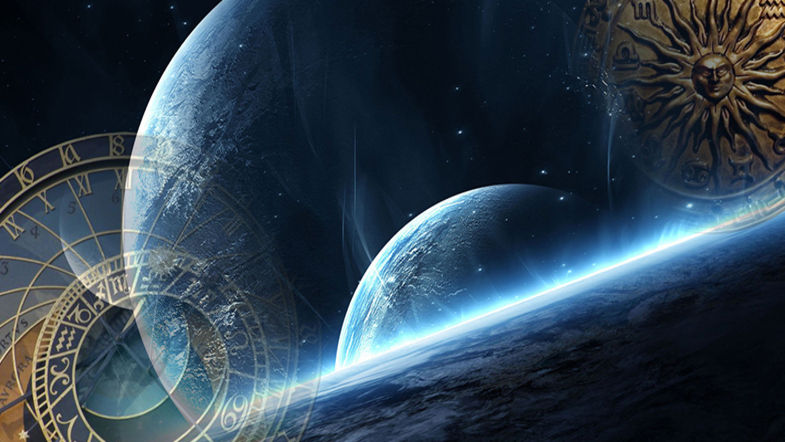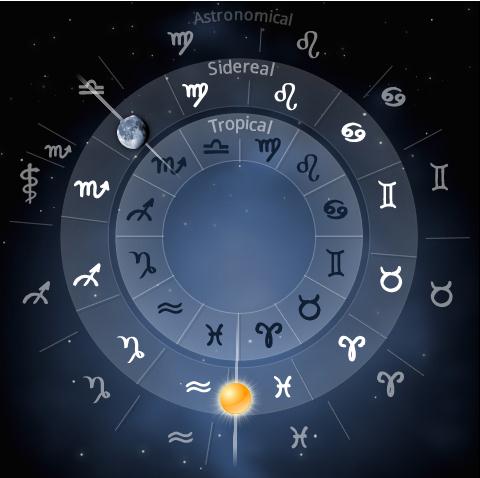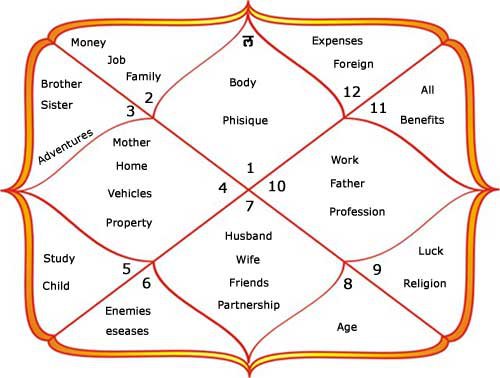Introduction to Jyotish

Jyotish or Vedic astrology or Hindu astrology is a section of the Vedas on the destiny of people, on the laws of Karma and Dharma, on the influence of celestial bodies, planets, which in Jyotish are called sins (invaders), because they "capture" human consciousness by their influence. There are only 9 of them: the Sun, the Moon, Mercury, Venus, Mars, Jupiter, Saturn, and two shadowy grahas: Rahu and Ketu.
The Vedas are old more than 5-7 thousand years. This is an encrypted message of the Higher Powers, written in the ancient language of Sanskrit. Prior to that, this knowledge was passed from mouth to mouth.
Jyotishi's knowledge helps to see the past, present and future, to predict a person's destiny, to protect him from possible difficult moments in life, to decipher his purpose and to help in its realization.
Jyotishi uses a natal chart that reflects a person's past, present and future, various events in his life, level of health, karma in marriage, finances, work and career, level of luck, karmic tasks of the soul and purpose.
Jyotish is translated from Sanskrit as the Light of God or the Light of Knowledge, and jyotisha (astrologer) is the one who carries this Light to people, the guide of knowledge.
Jyotish also reflects the laws of Karma, the universal law of causation. The law of karma covers both past lives, present life, and future human lives. In this life we not only reap the fruits of past karma, but we also "build" brick by brick our future, "sow" the seeds of future karma, second by second lay new karma.

In Jyotish and Vedic knowledge in general there is also the concept of Dharma, which is a balance of established norms and rules, karmic laws, the observance of which is necessary to maintain cosmic order and balance.
The dharma of man is his task of incarnation, his destiny, to be in his place, to fulfill his role and mission in this world for harmony and universal order.
Adharma is the opposite of Dharma, non-fulfillment of one's life task, not passing one's way, and therefore a violation of the Divine order and Cosmic laws. Adharma is translated from Sanskrit as injustice, immorality, lawlessness, ignorance, everything that is the opposite of right.
How is Vedic or Eastern astrology different from Western?
Western astrology uses a circle to construct a natal chart, in Vedic astrology the horoscope is built in a square.
Both in the west and in the east there are similar planets, signs, houses, but only in western astrology the planets Neptune, Pluto, Uranus are used, which are not in the Vedic, and in the east - the shadow sins of Rahu and Ketu, which are not in the west.
Vedic astrology uses the sidereal zodiac, while western astrologers use the tropical abstract zodiac, assuming that the sun always comes to the same point during the vernal equinox.

But the universe is constantly expanding, the stars are gradually shifting and not standing still. The sun returns to the same point every year, but with a small shift, which is 50 and 1/3 second of the arc. If viewed during the year, this is a very small, microscopic shift. But if we consider in a wider range: 100 -1000 years or more, this shift is already large. Jyotish takes this shift into account, which is called procession or ayanamsha, and Western astrology does not take it into account.
The coincidence of the two zodiacs occurred on the vernal equinox of 285 AD. And now, for almost 2000 years, the displacement of the Sun was 23 degrees 52 '(almost one sign).
Western astrologers deduct the zodiac from the vernal equinox, while Vedic astrologers remain true to the constellations. Thus, the difference between the Vedic and Western natal charts is the displacement of the planets and the Lagna (ascendant) in the natal chart by about 23 degrees 52 ', depending on the date of birth.
Jyotish uses two options for constructing natal charts: the South Indian and North Indian forms of the horoscope. In counseling, I use the North Indian form of constructing a natal chart, because I studied it.
The Natal Jyotish chart is a square or rectangle divided into 12 parts (12 houses), each of which is responsible for a specific area of human life. In the houses, there are astrological signs and planets (Grahas), the unique combination of which creates a unique destiny of a particular person.
A natal chart is a star passport based on the exact date, time, and place of a person's birth. It shows how the celestial bodies were located at the time of her birth.

How they are located, how they are interconnected with each other, in what spheres and sectors they are - determines life, destiny, shows the karma of man.
This map is unchanged throughout a person's life, it does not change. It can be improved, but the main indicators, events that are visible on the human map, will still appear.
But at the same time, our attitude to these events, our feelings, our perception of them may change.
In Jyotish the natal chart is called Rasi. The numbers in the Rasi chart indicate the 12 signs of the zodiac: Aries, Taurus, Gemini, Cancer, Leo, Virgo, Libra, Scorpio, Sagittarius, Capricorn and Aquarius.
At the same time, the letters denote in Rasi chart the planet (Grahas): Su (Sun), Mo (Moon), Me (Mercury), Ma (Mars), Ve (Venus), Jp (Jupiter), Sa (Saturn), Ra (Rahu), Ke (Ketu).
As, for example, here:

All this subtle relationship and mutual influence of houses, planets, and astrological signs of the zodiac in his natal chart are manifested in the destiny of man.
I invite you to the world of Jyotish!
